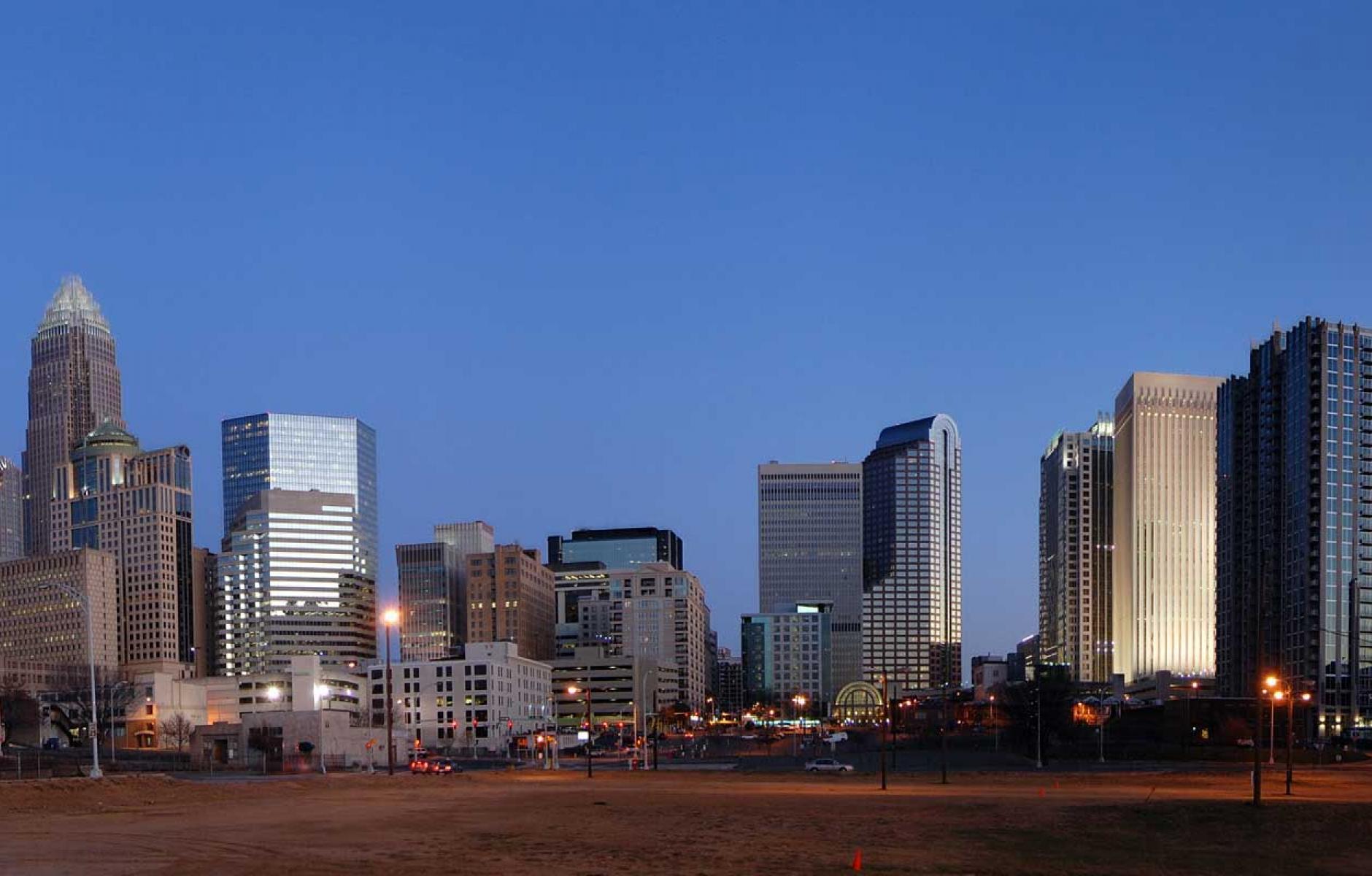
Pattern retrofit for resilience options
It is understandable if leaders of places like Cobb County, Georgia, a poster child for American sprawl, are not interested in addressing their deep urban pattern problems. Fixing underlying block, street, and lot patterns is not a sexy topic like architecture, placemaking, or major economic development initiatives. As explained in Part 1, the urban pattern is a critical foundation of a resilient economy—but building a resilient pattern does not guarantee that the economy will thrive.
The rub for Cobb County, and all the places like it across America, then, is that if they don’t fix the pattern problem, they are guaranteed to fail. If we are to believe the research by new urban firms such as Urban3, then Cobb’s current patterns are fiscally unsustainable, and unsustainable places eventually hit a wall. It’s easy to see why communities choose denial. Assuming Cobb has the fortitude to break out of denial, whatshould it do to reset its physical plan? A lot of ideas are in the air, but I’d like to examine a few of them beforemaking a recommendation.
Site-level incrementalism
One of the more prominent ideas currently floating around in planning theory is to actually plan and design very little—instead letting communities fix themselves in an incremental, site-by-site, street-by-street, fashion. I agree that we need more trial and error in our cities for the land uses and buildings sitting ontop of urban patterns, and that the current modern system of land use planning is so rigid it stymies it. Butincrementalism when applied to inadequate urban patterns is, unsurprisingly, inadequate. Have you ever seenthe bike lane or sidewalk developed incrementally that does not connect to anything on either end? Orhow about the massive apartment building stuck on an arterial with no connection to any other features of urbanism? Unfortunately. these interventions are examples of well-intentioned incremental urban changes that are going nowhere. The problem is that the parts are not adding up to a whole.
If these pieces were first steps in a plan for an urban pattern retrofit at a larger scale, perhaps they would be meaningful. But usually they are not. They are incremental efforts shoehorned into a dysfunctional urbanpattern. And if the urban pattern isnot addressed at the scale of the village, town, or city neighborhood, these incremental efforts, no matter hownoble, will never amount to much. If this approach did work, all the development ordinances promoting standards site-by-site would already have added up to better neighborhoods and towns. The economy works well piecemeal, and should be allowed to change incrementally,but the physical pattern of a community must be conceived holistically— even if it’s implemented piecemeal.
Focusing on the nearest downtown
Another prominent idea for fixing poor urban patterns is to focus on existing downtowns or neighborhoods that already have good patterns. This approach does make moresense than site-by-site change, but it is also inadequate because so little of places like Cobb County is made upof traditional urban fabric. In Cobb, “the focus only on the downtown” approach means putting all the county’s eggs in the small downtown Marietta basket. Some have argued that Marietta, as the county seat of Georgia’s third largest county,should become another southern city in its own right akin to Charlotte, North Carolina.
While I agree that it is absurd for Atlanta proper to be the only fiscally viable center for a region ofsix million people, I question whether turning the relatively few blocks that are currently downtown Mariettainto a new Charlotte is a good idea. Presumably, that approach would use the big capital that creates McRefugees (they are people in Hong Kong who sleep at McDonald’s because they have nowhere else to go—and they are also metaphor for those displaced by high housing costs in dense urban centers. See Part 1 for more discussion of McRefugees).
Downtown Marietta is currently the home of many of the poorest residents ofCobb County. If big capital redevelops Marietta, it will likely result in a bunch of megastructures sitting on the existingMarietta grid. Is this outcome really what Cobb wants? It is true that these structures will begin to fix the imbalance between Cobb’s productive land and public infrastructure liabilities, but that would probably not be enoughto make a large enough difference. And megastructures aren’t very resilient. This approach will just wipe out what little physical resilience Cobb County currently has, while displacing its most needy residents.
Developing around downtown
The idea of growing outward from downtown Marietta’s tiny good pattern footprint is another inadequate step in the right direction. The argument in favor of that approach is that manufacturing nodes of walkable, traditional urbanism out of whole cloth is awkward—but taking an existing city, like Marietta, and adding to its existing pattern is better. A careful examination of downtown Marietta, however, reveals that it very quickly degrades into massive arterials and mega-blocks and parcels. The nucleus of gridded pre-war Marietta is a tiny discrete island in a sea of big box stores, strip malls, and stand-alone developments, so the reality is that adding to downtown Marietta is probably just as difficult as fixing Cobb’s patterns somewhere else in the county. This is unfortunately true for most of America, because the pre-modern pattern is a small fraction of all developed lands.
Testing pattern retrofit for resilience across the county
What should Cobb County and all the places like it around America do? Instead of trying to incrementally improve at the wrong scale, or letting Marietta or some other part of the county morph into a non-resilient collection of mega-structures, or attempting only to retrofit around the edges ofdowntown, I suggest that Cobb County takes the trial-and-error approach of incremental development and bump it up a notch.
We should be testing out new patterns at the scale of a whole neighborhood or center in multiple places around Cobb. This is an incremental approach—but at a scale that has meaning. Moreover, there is no reason Cobb cannot try to expand the perimeter of its current downtown in Marietta in this scenario as well—the county just should notfocus solely on that location. The beauty of one-notch-up-in-scale incrementalism is that it still spreads the risk, but it also might actually make a difference. And, it is hoped, this approach will lead to far fewer sidewalks and bike lanes to nowhere, or stranded multi-family apartments. I call this approach “urban pattern retrofit for resilience.” Take a look at the Walkscore map of Cobb County below. From its modernist land useplanning days, the county has spread areas where big box retail and other non-residential uses cluster. With some effort, these locations could be turned into viable towns. This is retrofit—not of disjointed pieces but ofcomplete nodes, where the whole is greater than its parts.

A good example of what could happen in Cobb is the area around my former employer. This area at the intersection of two major arterials currently serves as a community center for Northeastern Cobb County. Ithas all the pieces of a town, including a park, schools, government offices, shops, third places. In short, it’s alreadysocially viable. But because of massive roads and parking lots, it’s not financially resilient, and if it’s not infilledsignificantly, it won’t stay viable for much longer. Fortunately, there are oodles of underused surface parking lots in this node ripe for redevelopment. Meanwhile, various trends from the introduction of automated vehicles to the exploding demand for multi-family housing in and around of Atlanta’s core, are creating enough market pressure to unleash this de facto Cobb County land bank.
There are nodes like that all over the county. Which ones can be viably pattern retrofitted for resilience? We won’t know the answer to that unless we reorient our planning toexperiment with pattern retrofit. A decentralized, locally grown, fine-grained economy must be nurtured. It will not be resilient if it doesn’t have a resilient place to inhabit. We mustchoose to create the urban patternsfor fiscal resilience. Naturally that’s not the only condition necessary to save Cobb County, but I believe It’s a critical first step in the right direction.
Changing Cobb’s pattern also will not be easy. We will need to muster the political will and the professional capital to make it happen. But I believe the options are clear: do nothing and be faced with densely populated but physically unsustainable places like Cobb County failing; or do whatever we can wherever we can to fix the urban patterns. That is the only way for such a sprawling mess to heal.
As a society, we must decide whether we want this kind of change or not. It’s not just going to magically appear. Do we think this fine-grained mesh of physically resilient places, where decentralized capital can flourish, is just an amenity—or is it necessary? I believe it’s the latter, and since I, like many other Americans, am likely to become a McRefugee landing in a place like Cobb County, I want to do whatever I can to make theseplaces more viable.




